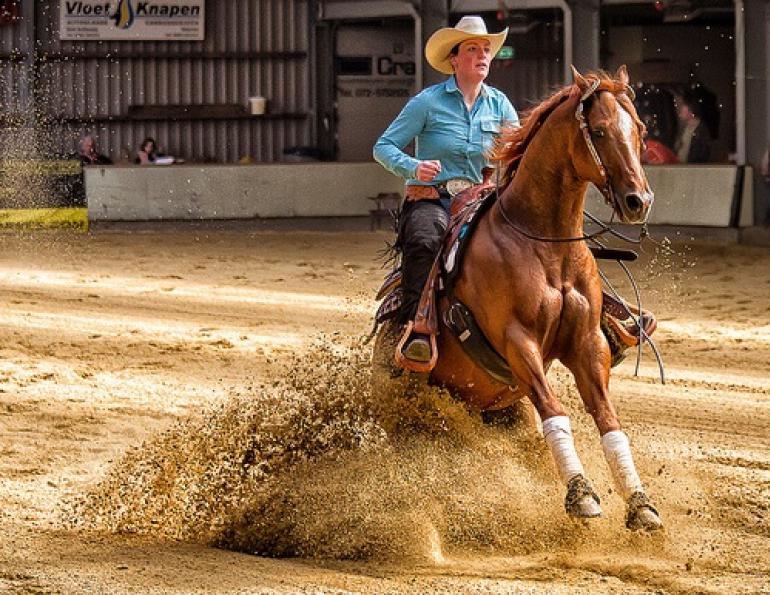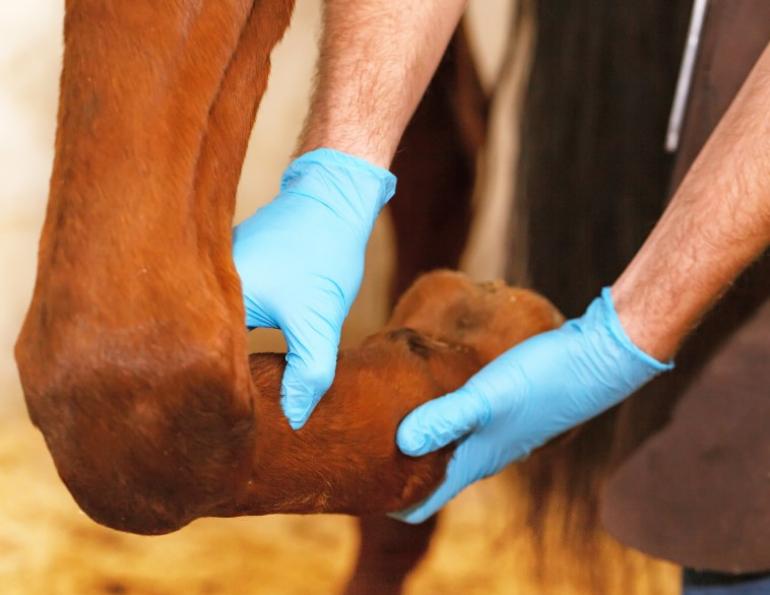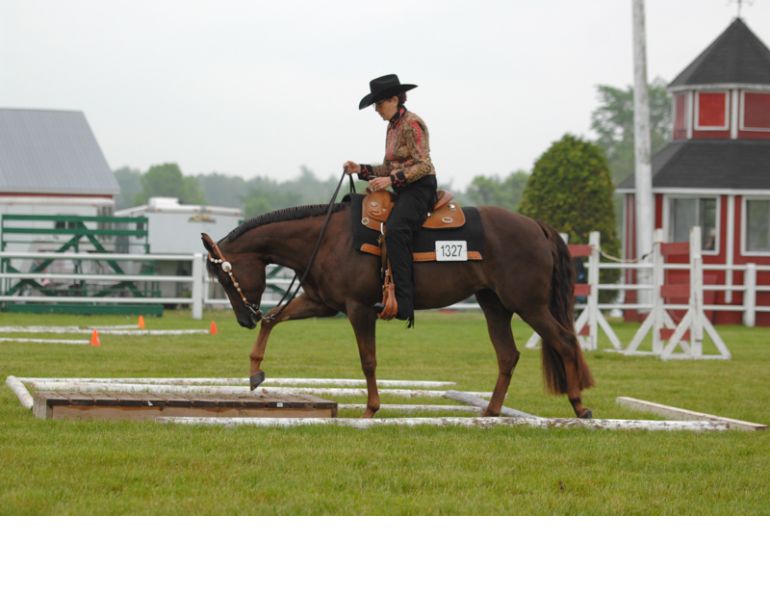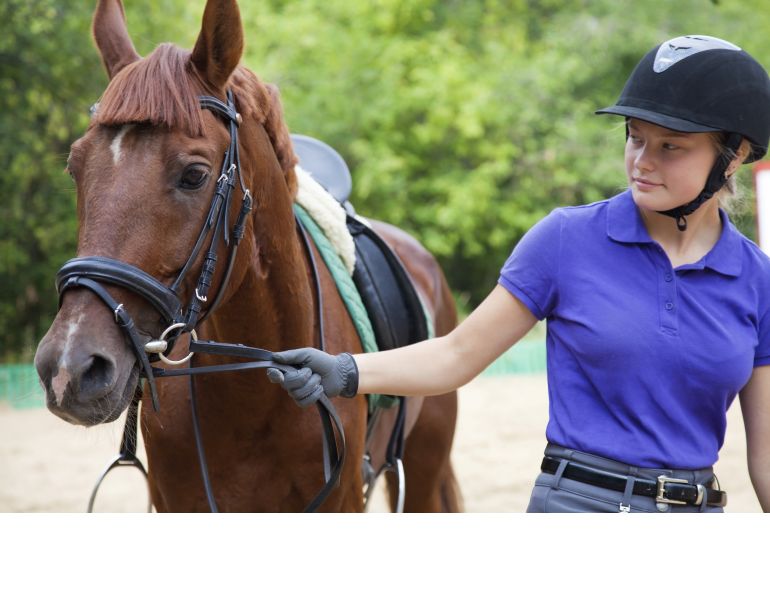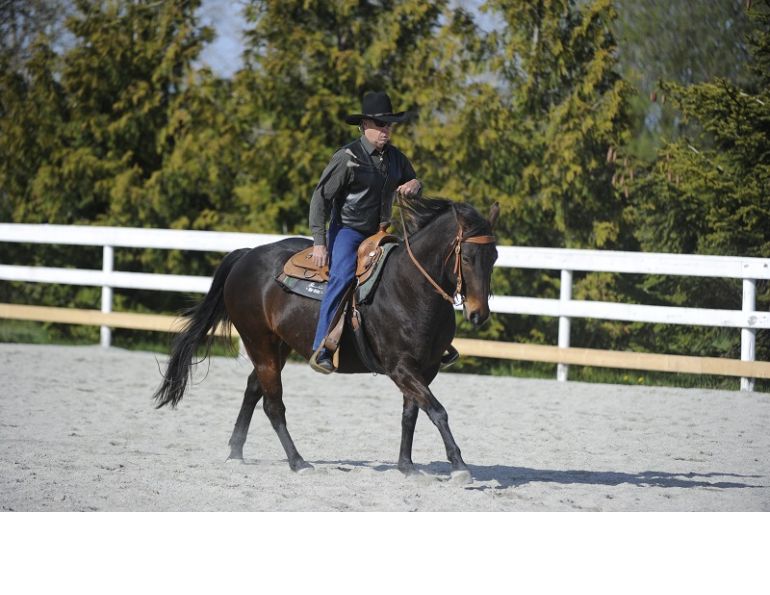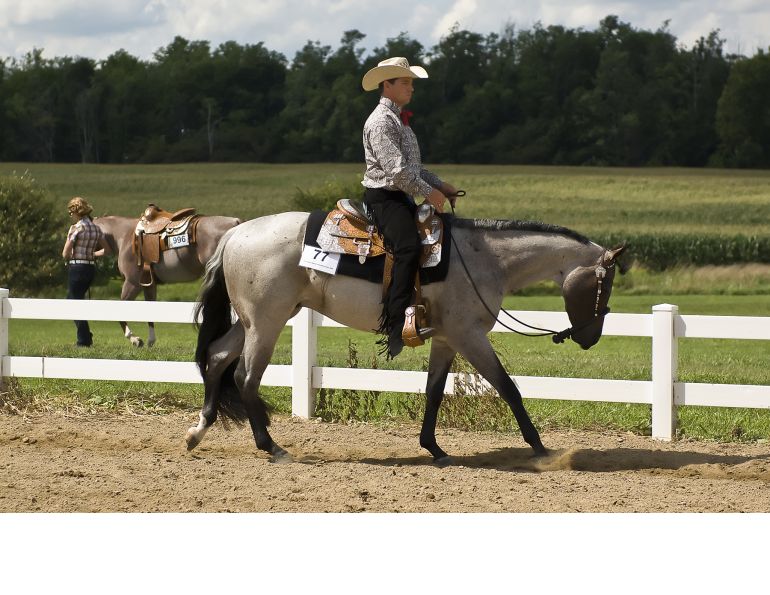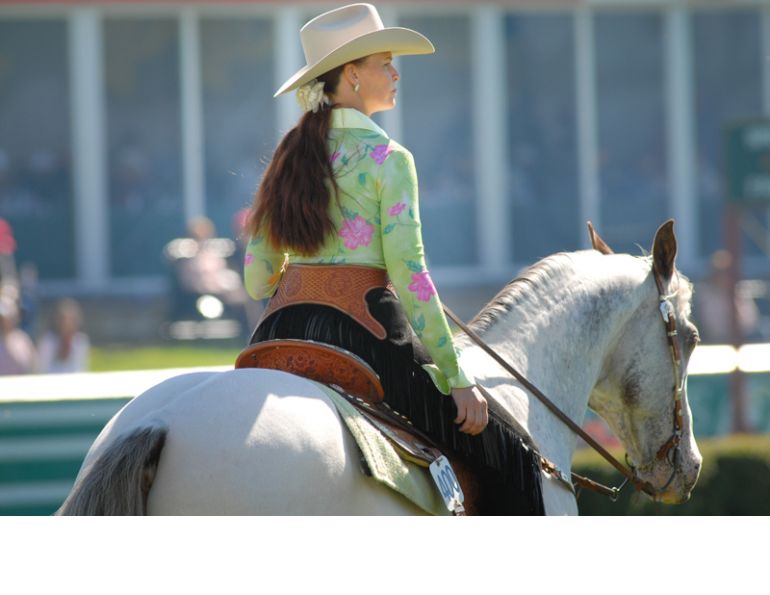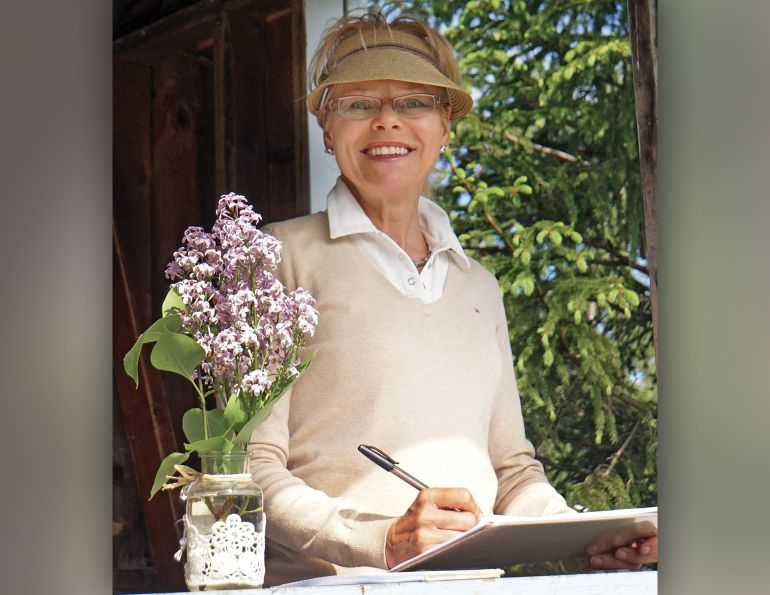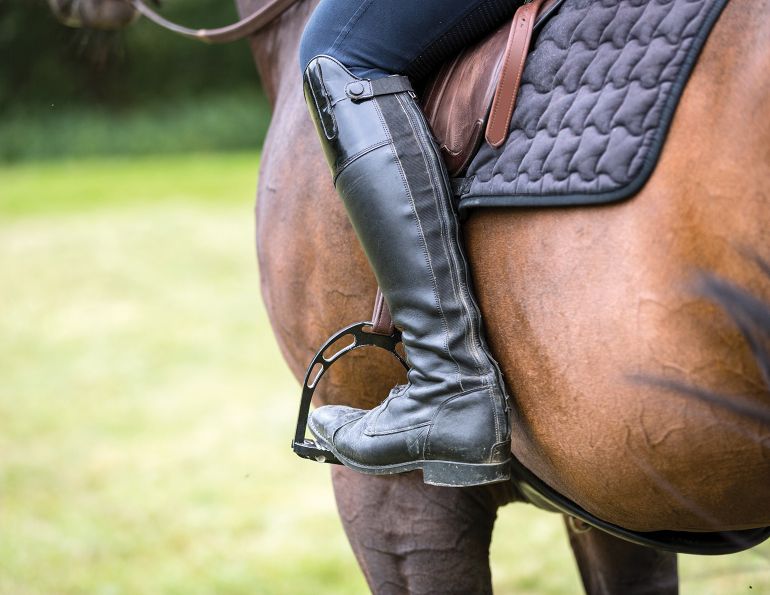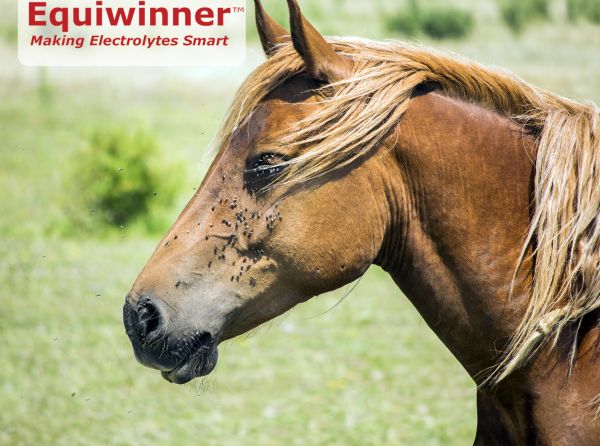With Lyle Jackson
By Jess Hallas-Kilcoyne
In reining, rhythm, or “cadence,” is necessary when it comes to executing all aspects of a well ridden pattern. The horse should be balanced and responsive while willingly accepting the riders aids which should appear seamless.
Establishing a consistent rhythm which can be adjusted accordingly is one of the fundamental building blocks that will assist the rider in achieving the ultimate goal in reining, which is a horse who appears to be executing a flawless pattern without the interference of the rider.
The circle maneuver in a reining pattern requires a consistent, even cadence, although the rhythm might change from fast to slow. “The horse must respond to the rhythm dictated by the rider’s legs,” says Lyle Jackson, regardless of the pace and the maneuver.
“Most of the work building cadence is done at the trot,” Jackson explains. “The most successful programs are those that keep the exercises simple.”
Here’s one of Jackson’s favourite exercises for maintaining cadence and improving balance at the trot:
Exercise #1 – Rhythm & Balance on a Circle
Begin by trotting small circles of about 10 metres in diameter on a loose rein. “Guide the horse in the circles with loose contact,” says Jackson. “The aim is to develop a relaxed gait that does not require restraint from the rider through the reins.” Maintain this relaxation as you decrease the circle size to about six metres in diameter. Drive your horse forward only with your inside leg, which should be positioned slightly back so as to control the horse’s hip. To allow total freedom of movement, you should only use your inside rein to guide the horse.
“Pushing with the leg in cadence with the horse’s movement, the rider should push the hip into a slightly larger circle than the forehand,” Jackson says. “This drives the horse’s inside hind leg up underneath him, getting his inside foot up closer to the centre of gravity.” While the displacement of the hip is so slight that a spectator will not even be able to recognize it, the rider should be able to feel the inside hind stepping further underneath the horse’s body.
“It is important that the outside leg and outside rein are off the horse,” Jackson continues. The inside rein should be the only aid guiding the horse. “We want to keep the outside of the horse free and unrestricted to allow the movement.”
After a few circles of focusing on this exercise, relax your leg and allow the cadence to become slower, and the circle larger (about ten metres in diameter). “With repetition,” says Jackson, “the horse will look forward to the reduced cadence of the leg and readily match it.”
Not only does this exercise improve the cadence and balance of the reining horse, but also demands that the horse focus his attention on the rider. However, Jackson reminds us that “it is the removal of pressure that teaches the horse… so when the horse matches the rhythm of your leg, reduce the pressure, increase the circle size, and slow it down with your leg.”
Once you have mastered obtaining rhythm and balance on a circle, it's time to put your new skills to the test with Jackson's next training exercise.
Exercise #2 – Staying with the Rhythm
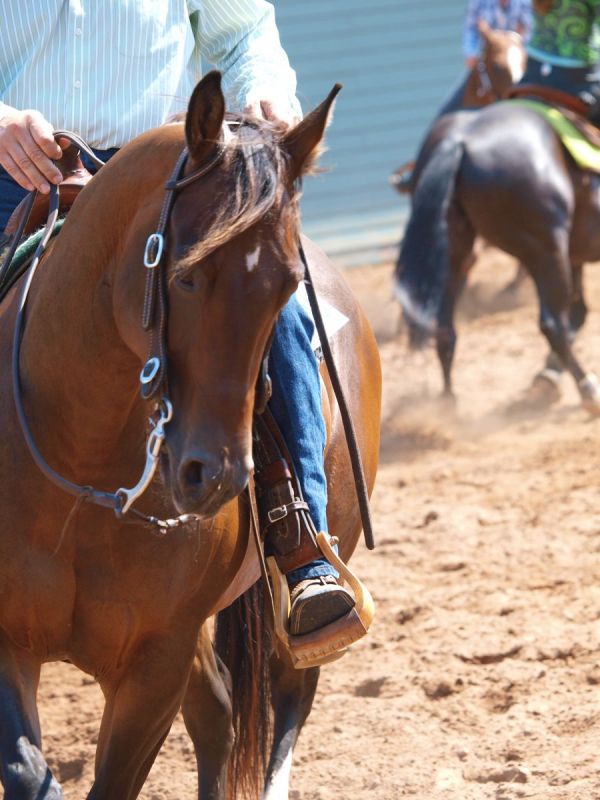
Photo: Pam MacKenzie
“Start with a horse that is getting ahead of you and not staying with your rhythm. Naturally, you pull slightly on the reins and hold him gently in frame,” says Jackson. “It is important that as you pull you keep bumping with your legs.” This may seem counter-intuitive, but slow down the rhythm of the application of your leg aids and bump just a little bit harder, all the while maintaining a slight pull on the reins. “The moment he slows down because of the pull on the reins, bump a little softer and a little slower,” Jackson says. “This takes the pressure off him. He is being rewarded for going slower. Whenever he begins to take on a better frame or a better speed, you have to release the pressure a little. He must be immediately rewarded, but not turned loose. Do not throw away the reins. Do not quit using your legs. Simply reduce the pressure and slow the rhythm.”
Regular rhythm, or “cadence,” should always be in evidence during execution of a reining pattern, even when it comes to the stop maneuver. “Not only is the quality of the approach being judged,” Lyle Jackson explains, “but if the approach fails, the stop will also fail to be correct. In the approach, the horse has to run straight with ever increasing cadence...all the way to the end.”
Exercise #3: Loping the Oval
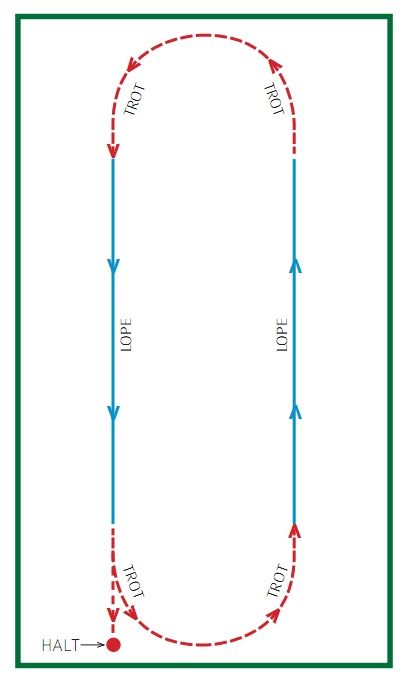
To build good cadence in preparation for a great stop, “practice by loping long ovals,” says Lyle. “Start a straight line about half way between the side wall and the arena center, and lope with ever increasing cadence parallel to the long wall.”
As you approach the end wall, bring the horse back to trot, ride a half-circle around the end of the arena, and then pick up the lope again and ride a straight line going back to the other end of the ring, building your cadence as you go.
“Repeat this until you can control the rhythm simply with your legs, and not with your reins,” Lyle advises. “The horse has to stay relaxed...time must be taken to start slow and get the horse and the rider accustomed to the speed.
“When the horse begins to anticipate the turn at the end of the arena, alternate the drill with holding him straight and having him trot up to the wall, stop, and rest,” says Lyle. “As in all training drills, there has to be a release of pressure at the end to keep the horse happy and relaxed.”
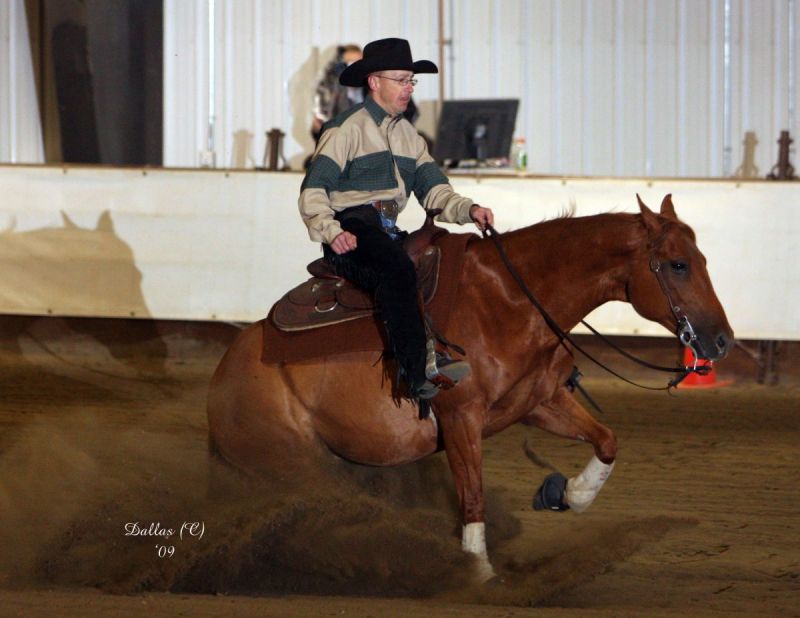
The Loping the Oval exercise will help prepare you and your horse for performing sliding stops. Photo: Dallas Pole
The break to the trot is important as the front legs and shoulders have to stay elevated and loose in the sliding stop; the trot will help this. This exercise also trains the rider to maintain the cadence, and “ride the stop without getting in the horse’s face too much,” Lyle explains. “That is, learning to keep their hands down and resist the temptation to pull.”
As horse and rider become more accomplished at the drill, once in a while the amount of trot can be shortened, then eliminated, so that the horse lopes to the wall and volunteers to stop in a relaxed form. The key to this exercise is that the wall stops the horse, without the rider pulling on the reins.
About Lyle Jackson

Lyle Jackson is an official FEI (I), NRHA, AQHA, NRCHA, and APHA judge who has judged international shows and futurities throughout Canada, the US, and Europe, as well as in Israel and South Africa. He has trained horses for the Western disciplines and has successfully competed in reining, Western pleasure, cutting, and halter events.
Main Photo: ©Edward Dalmuder/Flickr - Establishing cadence with your horse will lay the foundation for perfecting all of the reining elements, such as a sliding stop.



